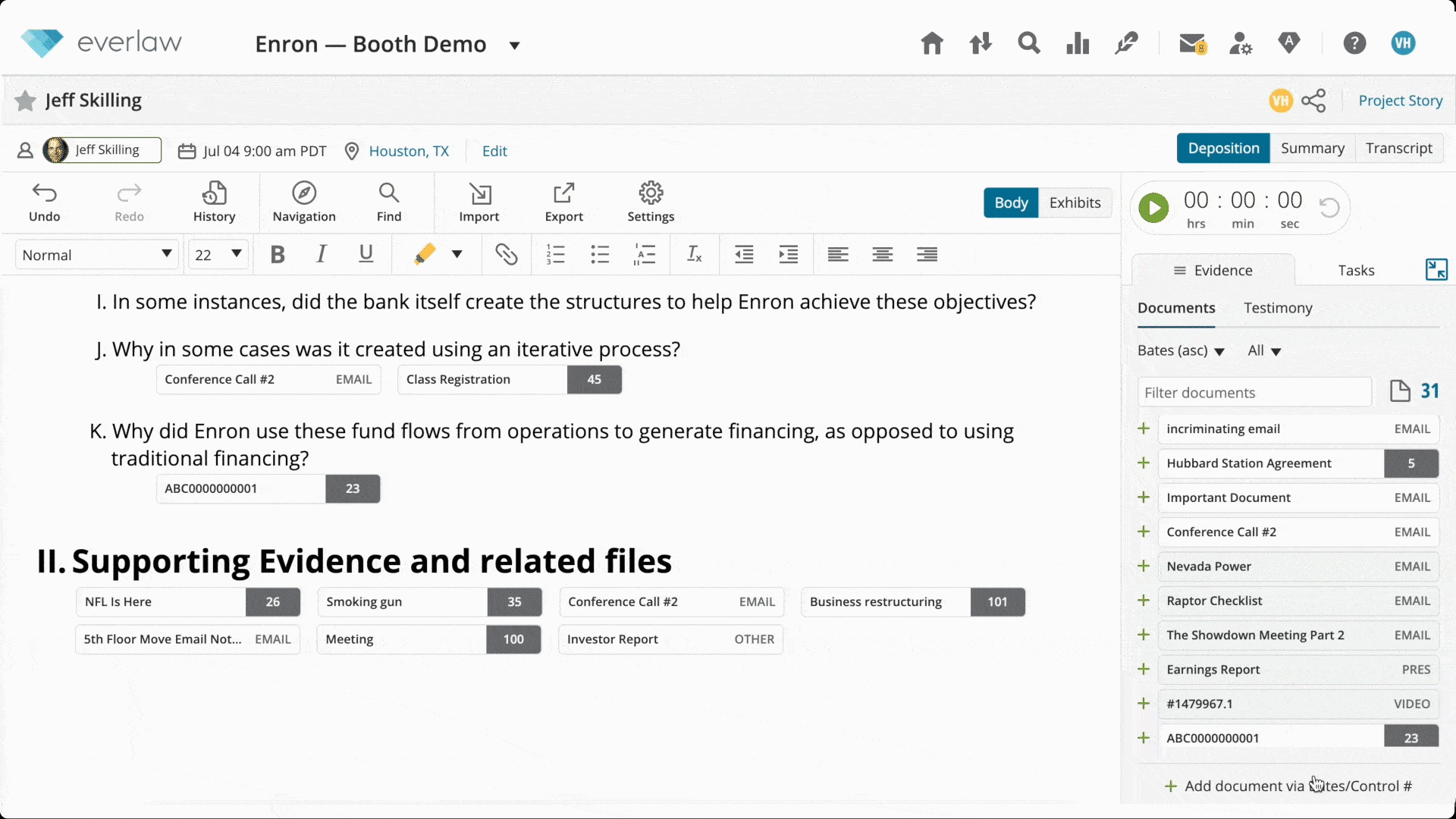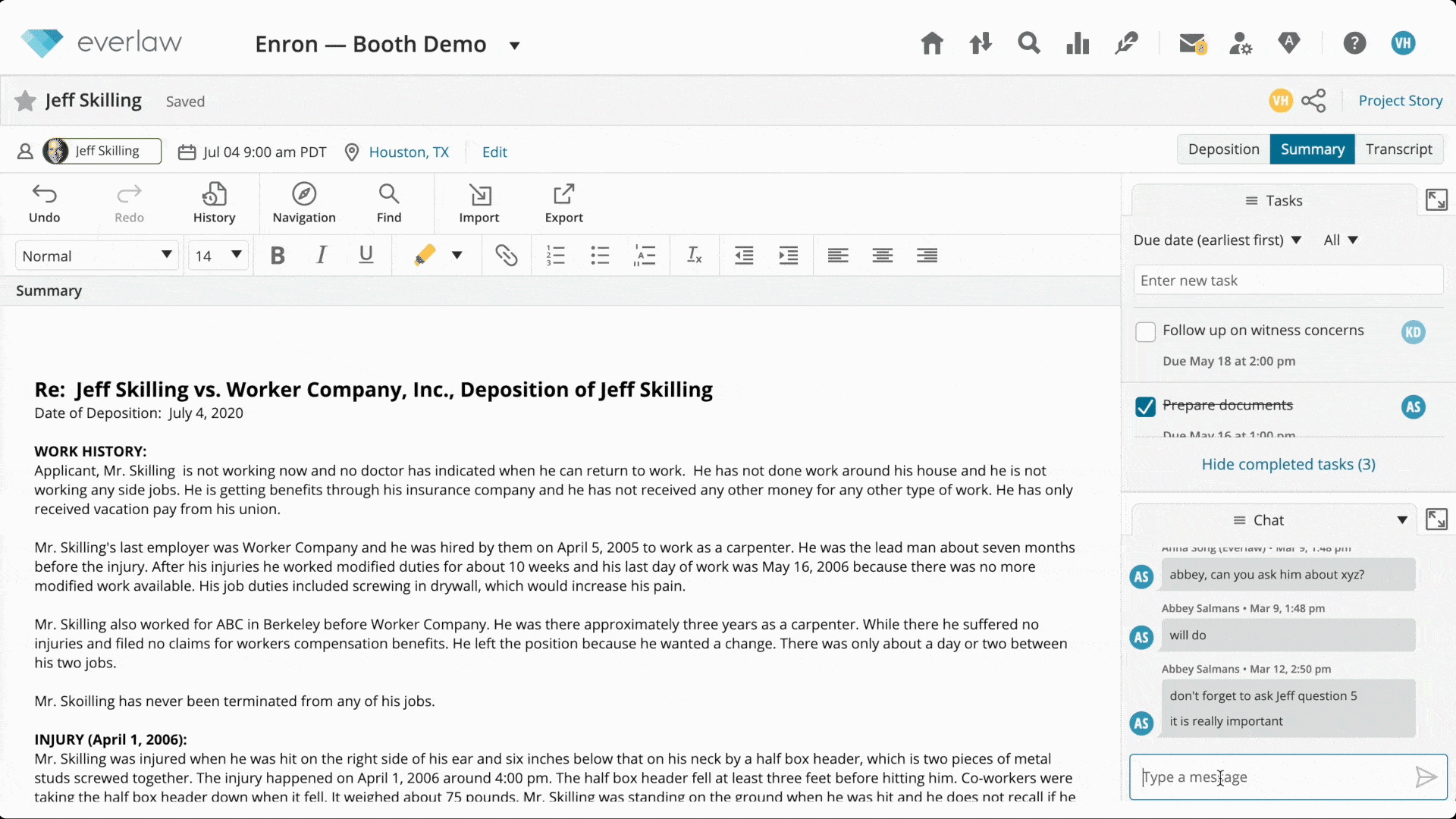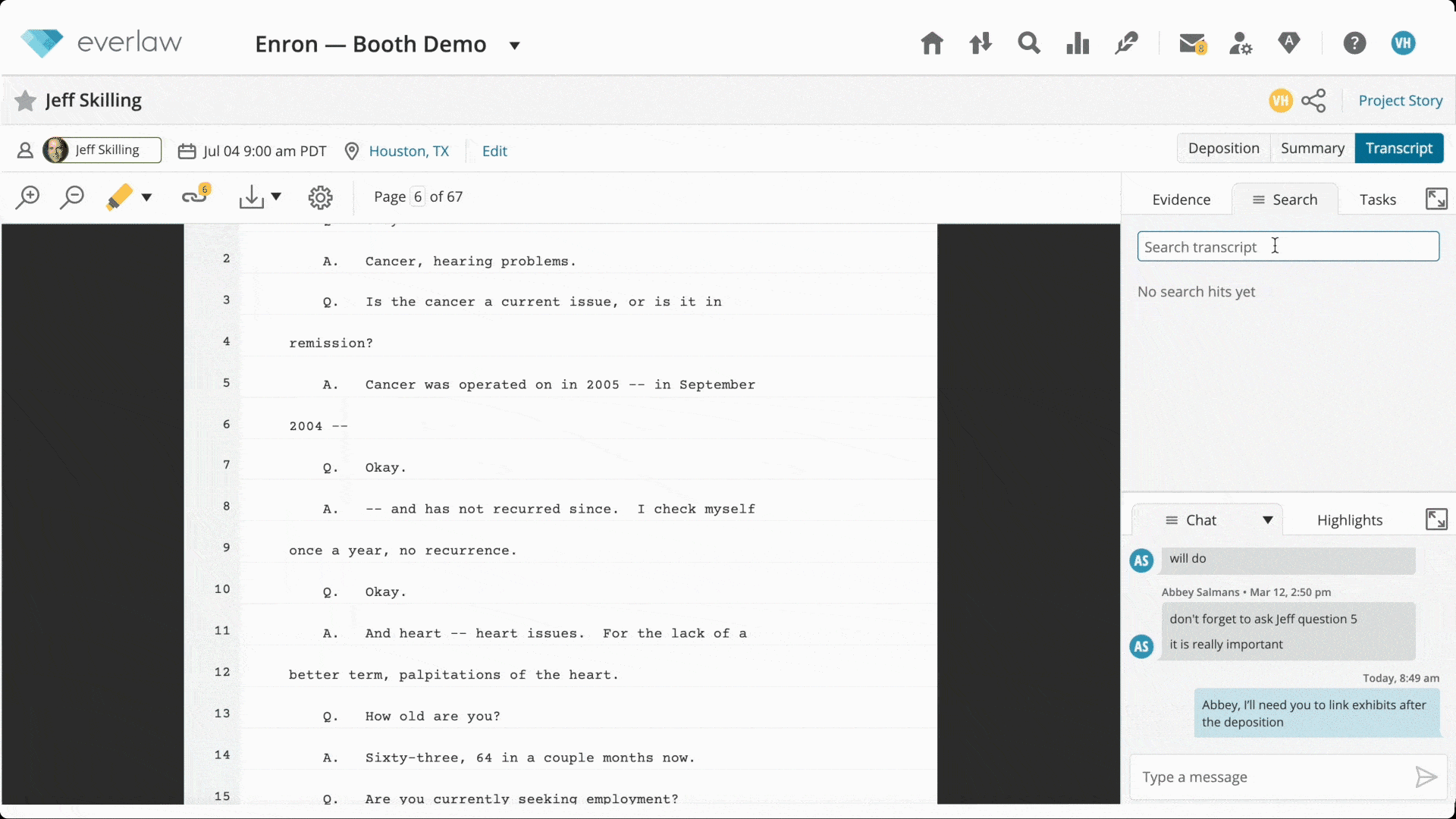Introducing seamless Depositions to Everlaw
A collaborative trial preparation tool to prepare, conduct,
and review depositions
April 2019-Jan 2020 • A zero-to-one project
Overview
In 2019, cloud-based ediscovery platform Everlaw made major moves to expand and rebrand Storybuilder, their integrated suite of trial preparation tools. I led the end-to-end design of the new Storybuilder Depositions tool.
I worked alongside a product lead who led scope definition and user research, and 4 engineers for implementation. Near release, we added an additional product designer and handful of developers to ensure a smooth launch before our big deadline.
CONTEXT
What are depositions?
Depositions are out-of-court question and answer sessions where attorneys gather information from witnesses under oath. These formal, recorded examinations are transcribed by court reporters.
Depositions consist of four main stages: prepare, conduct, summarize, and analyze
Depositions don’t happen in silos
Large volumes of data are constantly passed between various parties
Series of depositions can range from an hour to months
Each examination requires going through stages of endless tasks
“When there is a big case, that means more depositions and more documents, which also means more opportunities for everything to be disconnected.”
– A legal associate
PROBLEM
Battling the way it’s always been done
Many attorneys are still using pen and paper to conduct their deposition preparation and analysis. If not pen and paper, they are jumping from a word processor to a PDF reader to a spreadsheet viewer and back.
Users needed a single, cohesive digital experience to prepare, conduct, and review depositions without drowning in their sea of documents and piles of sticky notes.
SOLUTION
Delivering an integrated workspace
Introducing 3 new modes and 6 new modules, Everlaw’s Depositions helps users collaborate to prepare documents, draft outlines, summarize and share insights, and annotate the transcript seamlessly—all in one place.
Organize effortlessly
Keep track of documents with exhibit numbers, view all references in other depositions, and pull in new documents from your database at any stage
Collaborate securely
Communicate instantly with teammates, assign tasks to keep the case rolling, and summarize and share major takeaways without leaving the page
Analyze with ease
Create highlights and annotations, search for keywords, and export work product with all the tools you need
RESULTS
Achieved steady adoption rates and an excitement for more
A year after release, with 2,300+ Depositions created, we’ve seen a consistent increase in Deposition creation, user sessions, and actions taken over time. 🎉
In our annual user survey, user satisfaction in the Storybuilder suite increased by approximately 92.5% from the previous year after releasing Depositions.
A review on G2, a trusted tech review platform for software products
G2 users love it
“Everlaw provides useful outlining features to create deposition outlines where exhibits/documents can be directly linked to the examination outline meaning you don't need to work in different applications to get the same result.”
— Small Business User in Law Practice
“I am very pleased with Everlaw's continued work on their platform which now includes the integration of fact building, timelines, deposition outlines and transcripts…in one app.”
— Christine M at Mid-Market Law Firm
“The new features of Storybuilder makes it easy to collaborate with colleagues in preparation for deposition and during deposition.”
— Administrator at Mid-Market Law Firm
PROCESS
How we got there
The process included plenty of user interviews, competitor analysis, user flows, team feedback, and usability tests
USER RESEARCH
Designing for busy attorneys and litigation specialists
Through a series of user interviews, we learned that the key players for a successful deposition are a team of skilled litigation attorneys and litigation specialists. We discovered a handful of their pain points.
Existing workflows involve constant context switching
Keeping teammates updated requires a lot of back and forth
Doc management gets messy and tedious
Methods used tend to be archaic
Checking out the competition
After diving into 7 transcript managers and exploring 3 trial presentation tools, I also identified some additional pain points and opportunities:
Manual exhibit linking
Lack of team tools
Cluttered, outdated interfaces
The research helped us identify the top pain points we wanted to address and which new functionalities to prioritize. With the scope set, the fun of user flows and wireframes begins!
LO-FI WIREFRAMES TO HI-FI MOCKUPS
The evolution of Depositions
Integrating various new modes and modules while keeping the experience simple and intuitive was no small feat. To get there, we made plenty of iterations, using research-informed goals to guide my decisions along the way.
USER TESTING
Validating the smaller details
Throughout iterations, we conducted various usability tests and discovered that:
the Summary section aimed to promote collaboration was not discoverable,
there was still some friction in linking exhibits,
and exhibit numbers come in various formats, not just numerical inputs.
Implementing small fixes from these insights made a huge difference!
TAKEAWAYS & NEXT STEPS
Learning how to scale my process
Designing a tool of this scale that would support an entire new workflow for our users had me stoked! Collaborating with multiple developers at once was fun, but also a challenge meeting all of their design needs simultaneously.
Coming out of this feature, I strengthened my ability to prioritize tasks, identify and communicate blockers, and learn when to ask for help.
Ready for round two ✌️
With version one launched (we celebrated with a team lunch 🥳), we are ready to roll-up our sleeves for further developments. The exploratory research for this feature helped broaden our understanding of users’ workflows, and now we can dive even deeper with more targeted, in-depth interviews for improvements—specifically, allowing users to easily extract key testimony from transcripts.





























